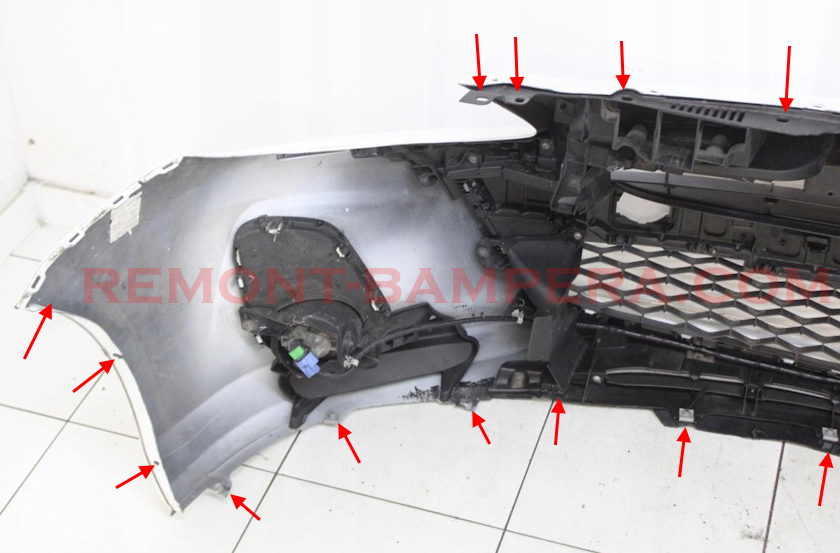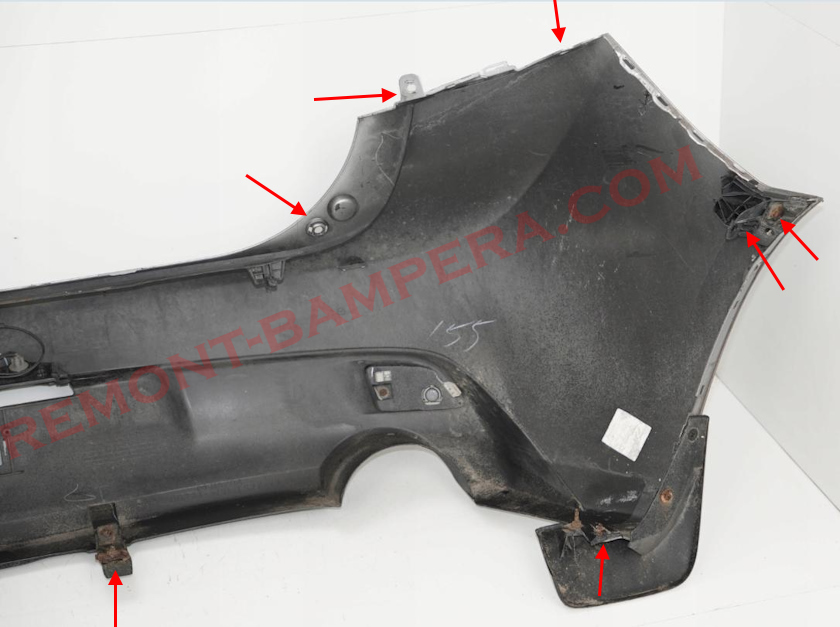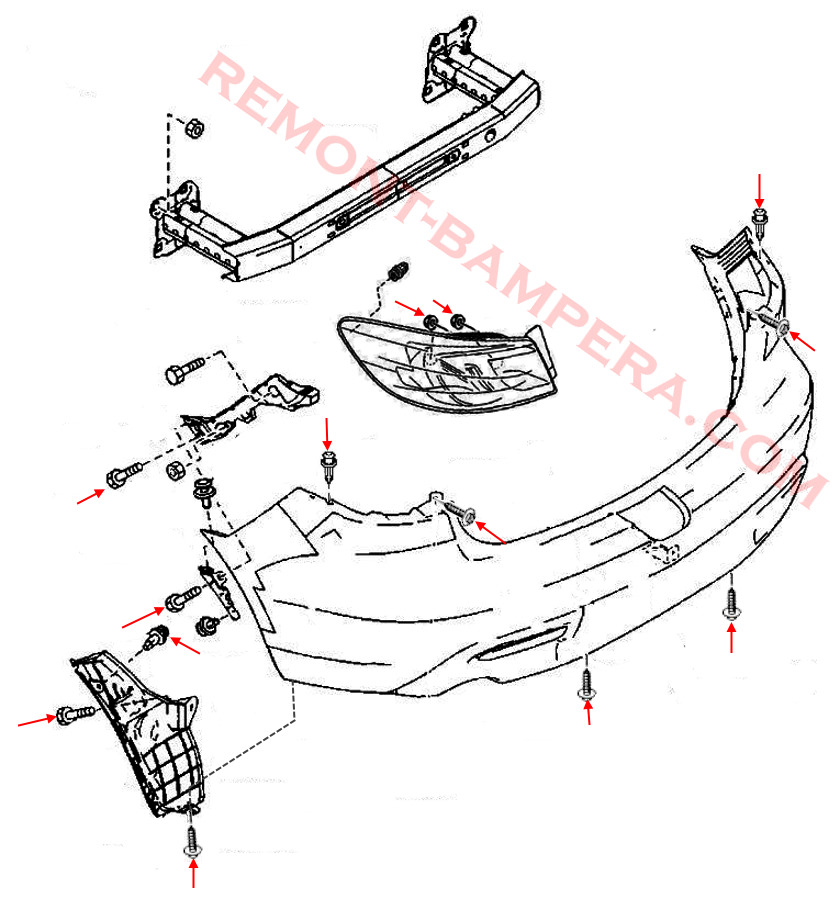The second generation Mazda 3, known by the factory code BL, replaced the popular MK1 (BK) and strengthened the Japanese brand's position in Europe. This model is remembered for its stylish design, lively character, and reliability. Let's examine its history, features, and interesting facts.
Production Years and Facelift
The Mazda 3 BL debuted in Europe in 2009, although sales began in some countries (like Japan) as early as 2008. Production for the European market continued until 2013, when it was replaced by the third generation (BM).
In 2012, the Mazda 3 BL underwent a facelift that affected both exterior and interior. The changes included:
- New radiator grille with "smiling" design (similar to Mazda CX-5)
- Redesigned bumpers and LED daytime running lights (for versions with bi-xenon headlights)
- Updated instrument panel and new interior materials
- The facelift also brought minor suspension tweaks for improved comfort
Bumper Plastic Marking: >PP-(S27+T17)<
How to Remove the Front Bumper
- Open and secure the hood
- In front of the radiator, unscrew two bolts and remove six clips (screwed and inserted top to bottom) securing the top of the front bumper
- From underneath, unscrew eleven bolts (screwed bottom to top - note different sizes) securing the lower part
- To avoid wheel removal, simply turn the steering wheel to the side
- In wheel arches, remove two clips per side securing the fender liners and unscrew one bolt per side securing bumper corners to guide rails in fenders
- Release latches in fenders (pull corners toward you)
- With an assistant, remove the front bumper by pulling forward (watch for wires and hoses)
- Disconnect electronic component connectors (if present)
- If equipped with headlight washers, disconnect hoses


How to Remove the Rear Bumper
- Open the trunk lid
- (Hatchback) Remove two clips in trunk opening
- Remove rear trim and free edges of side trunk liners (to access rear lights)
- Behind side liners, unscrew three (or two depending on body type) nuts per side, disconnect wiring, and remove taillights (secured by clips in fenders)
- Below taillights, unscrew two bolts and remove two clips securing top of rear bumper
- From underneath, unscrew four bolts (screwed bottom to top) securing lower part
- In wheel arches, unscrew two bolts and remove two clips securing fender liners (don't remove mudguard bolts)
- Move liners aside and unscrew two bolts per side securing brackets
- Release fender latches (pull corners toward you)
- (Requires two people) Remove bumper by pulling backward (avoid damaging wires)
- Disconnect license plate light and parking sensor connectors (if equipped)



Body Types and Specifications
The Mazda 3 BL was offered in two body styles:
- 5-door hatchback - most popular in Europe, ideal for cities
- 4-door sedan - less common but valued for larger trunk (430L vs 300L in hatchback)
European models featured these engines:
- Gasoline: 1.6 MZR (105 HP), 2.0 MZR (150 HP), post-facelift - 2.0 SkyActiv-G (165 HP)
- Diesel: 1.6 MZ-CD (109 HP) and 2.2 MZR-CD (150/185 HP)
- Transmissions: 5- or 6-speed manual, or 5-speed automatic (for 2.0 MZR)
Model Description
The Mazda 3 BL featured sporty styling with flowing lines and an aggressive front end. The facelift added more dynamism with KODO ("Soul of Motion") design elements.
The interior was simple yet ergonomic:
- Quality soft-touch plastics (in top trims)
- Comfortable seats with good lateral support
- Minimalist instrument cluster with red lighting (reminiscent of RX-8)
- The chassis was typical Japanese of the era: precise steering and firm suspension for responsive handling
Interesting Facts
SkyActiv - Beginning of Evolution
Post-facelift, the Mazda 3 BL was among the first with SkyActiv technology - new 2.0L engine (165 HP) with high compression (14:1), paving the way for Mazda's efficient powertrains.
MPS Version Not for Europe
Unlike the first generation, the Mazda 3 BL MPS (Mazdaspeed 3) with 2.3L turbo (260 HP) wasn't officially exported to Europe.
Reliability and Rust
While considered very reliable, like many Japanese cars of the era it could suffer rust (especially in cold climates).
Ford Influence
The platform still shared components with Ford Focus II, but Mazda engineers refined it for sharper handling.
Rare Versions
Some markets offered AWD variants, nearly unavailable in Europe.
Conclusion
The Mazda 3 BL strikes an excellent balance between driving enjoyment, practicality, and Japanese reliability. Even today, these cars remain popular used choices thanks to straightforward mechanics and good parts availability. The facelifted SkyActiv models offer the best compromise between performance and efficiency.
When considering a used Mazda 3 BL, carefully inspect body condition (rustproofing is essential!) and service history - with proper care it will deliver years of satisfying ownership.

 English
English  Italiano
Italiano  Français
Français  русский
русский  Deutsch
Deutsch  Español
Español